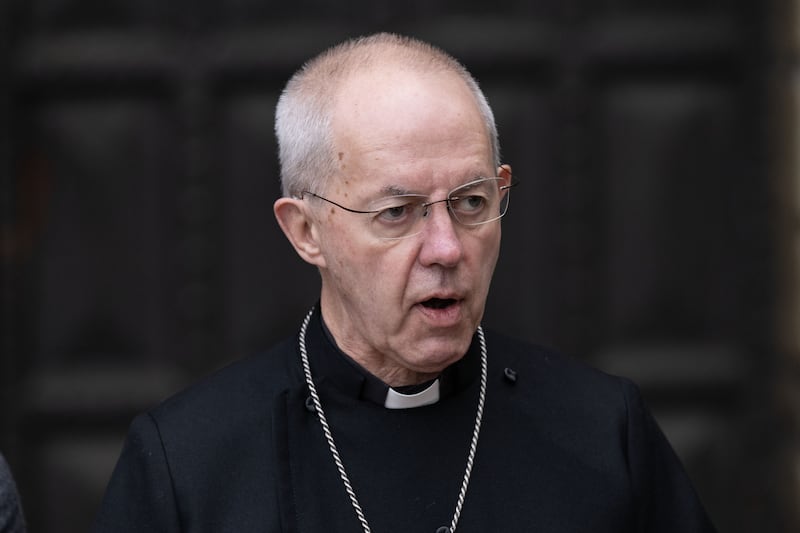The Government’s pledge to deliver 2.5 million more appointments through its dentistry reforms may not be entirely “reliable”, a minister has admitted.
Health minister Dame Andrea Leadsom said that the figure was based on modelling and there is a “high likelihood” that it is not reliable.
It comes as MPs on the Health and Social Care Committee heard how some dentists think that the Government’s flagship dental recovery plan is a “joke”.
And Healthwatch England described how it continues to hear “desperate stories” from patients struggling to access care – including a person who overdosed on painkillers to treat pain caused by oral health issues.
The £200 million plan to bolster NHS dentistry in England was published last month.
Leading dentists said the recovery package will not be enough to help people struggling to access dental care.
But ministers said that the plan will “fund more than 1.5 million additional NHS dentistry treatments or 2.5 million NHS dentistry appointments”.
The NHS and Government have launched a dental recovery plan, for improving NHS dental services, ensuring patients have fairer, simpler and easier access to dental care. Find out more: https://t.co/k3lGko4Acl pic.twitter.com/CHSj2jRAAe
— NHS Leicester, Leicestershire and Rutland (@NHS_LLR) March 17, 2024
Asked how they got to the figure, Dame Andrea told MPs the figure was based on NHS modelling of a “complicated set of factors” adding: “But at the same time, it has quite a high likelihood of not being reliable as is the case with all modelling.
“As a previous finance person myself, I can absolutely assure you that it’s not rocket science, forecasting is a very tricky issue.”
She added: “Forecasting is not an exact science – that doesn’t undermine the fact that the modelling comes out with a number of 2.5 million – I am merely being cautious in saying that it could be more, it could be less, as is the case with all forecasting.”
Shawn Charlwood, chair of the British Dental Association’s (BDA) general dental practice committee, told MPs that there was nothing in the dental recovery plan “to bring this service back from the brink”.

He added: “The sense of disappointment and resentment in the profession is profound.
“We asked our members to sum up the plan in their own words… what we got was unambiguous: Cold Fury from colleagues who have given up hope.”
Mr Charlwood said that dentists described the plan as “too little too late”, “not fit for purpose”, “dishonest”, “inadequate”, “rubbish” and “a joke”.
He added: “It feels to me that this plan was not designed to rescue NHS dentistry, it was designed with the upcoming election in mind to try and limit the political damage the access crisis is doing to political prospects in constituencies.
“The measures in the plan make for a good press release, a nice photo opportunity or something for candidates to talk about on the doorstep, but this recovery plan, to be honest, is not worthy of the title.”
Meanwhile Rebecca Curtayne, external affairs manager at Healthwatch England, added: “We believe that the plan should have required dentists to put a ‘digital flag’ on the NHS website listings to indicate to the public: ‘I am open to seeing new NHS patients who haven’t been seen in the last two years’, because we continue to hear desperate stories from patients about lack of access, including in the last week, I heard about one person who overdosed on prescription painkillers they had borrowed from a friend in desperation to treat pain for untreated problems.”
The dental recovery plan includes:
– £20,000 bonuses for dentists working in under-served communities.
– Dentists being paid more for NHS work.
– A “Smile for Life” advice programme aimed at new parents and mobile dental teams being deployed to schools.
– The rollout of so-called “dental vans” in rural and coastal communities.
– Plans for the biggest expansion of water fluoridation in England since the 1980s.
As the plan was unveiled, hundreds of people were seen queuing in Bristol after a dentist opened up its books for new NHS patients.
Police were called to help manage the queues as people stood for hours, hoping to get on the list for NHS care.
Yesterday, hundreds of people desperate for an NHS dentist appointment queued for hours when a new practice opened in Bristol.
After 14 years of Tory decline, this is the Britain we live in today.
It's time for change. pic.twitter.com/GQAIRUosCA
— The Labour Party (@UKLabour) February 6, 2024
Mr Charlwood said only 2% of primary aged children in England would be seen by mobile dental teams who will deliver fluoride varnish treatments to more than 165,000 children.
And he also raised concerns about dental vans being deployed, telling MPs that they were “not the way to deliver mainstream dentistry”.
The plan also says that dentists will be paid more for their NHS work – uplifting the minimum unit of dental activity (UDA) value to £28, but Mr Charlwood said that this should increase to a “minimum” of £35.
He also raised concerns that the publication of the recovery plan had delayed contract reform for dentists.
Dame Andrea said: “Contract reform is absolutely the priority, however, when I first came into this role it seemed to me that dental recovery was even more urgent than contract reform.
“Having got the dental recovery plan out the door, we are now turning seriously to contract reform.”
Preet Kaur Gill, shadow minister for primary care and public health, said: “This shocking admission from the minister that she isn’t sure the Government can deliver promised dental appointments shows the Conservatives are out of ideas and out of time.
“After 14 years of Conservative neglect, patients are desperately queuing around the block to see a dentist, literally pulling their own teeth out, and tooth decay is the number one reason young children are admitted to hospital.
“Labour has a plan to rescue NHS dentistry, and reform it for the long run.”
A Department of Health and Social Care spokesperson said: “This figure is based on robust modelling which we will share with the committee. The minister simply meant that all modelling has an element of uncertainty.”









